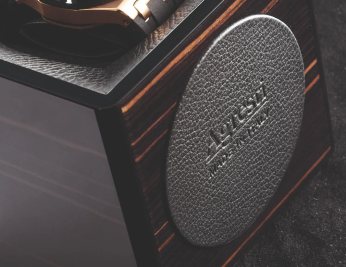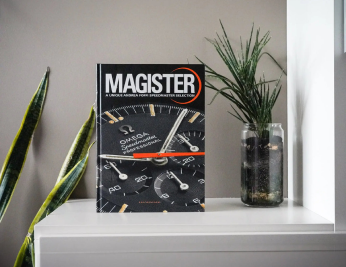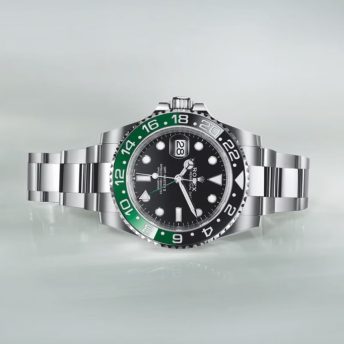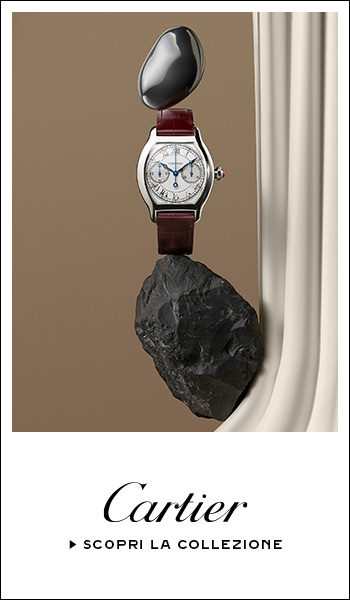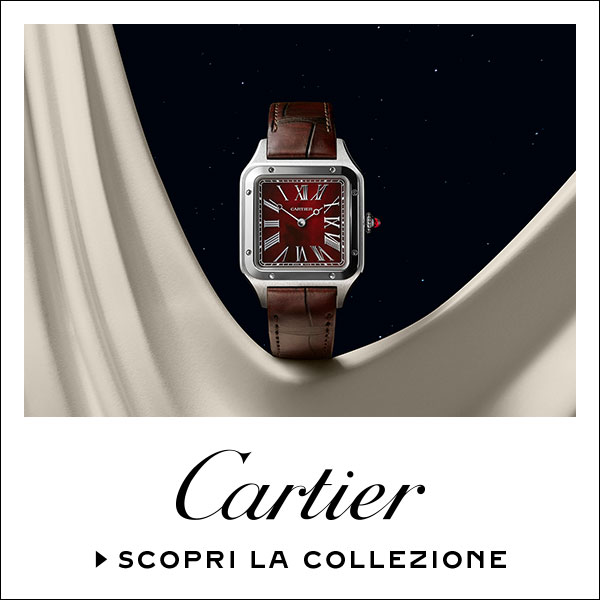Recognizing the various references of vintage Rolex Daytonas (4 digits) is always a struggle, but with this guide we hope to make it a lot easier for you!
The world of vintage is an incredibly complex ecosystem full of information which, if not well organised, risks being incomprehensible and lost in oblivion. Among the vintage watches that have enjoyed the most success these days, we can only take into account the vintage Daytonas with 4-digit references, real holy grails for collectors.
Recognizing each of these references is not child’s play but in our opinion it is one of the first steps to enter the world of vintage with awareness and to help you, we have decided to address this topic and create a special guide to references.
Start from the basics
Before starting to illustrate the various references and the differences between the models that have followed one another in history, we need to make a brief step back on the main elements that make up the vintage Daytonas and on which the most marked differences between the various versions can therefore be noted.
If before delving into this part you think you need to strengthen your knowledge of chronographs in general, I’ll leave you the link to our complete guide here.
Pushers

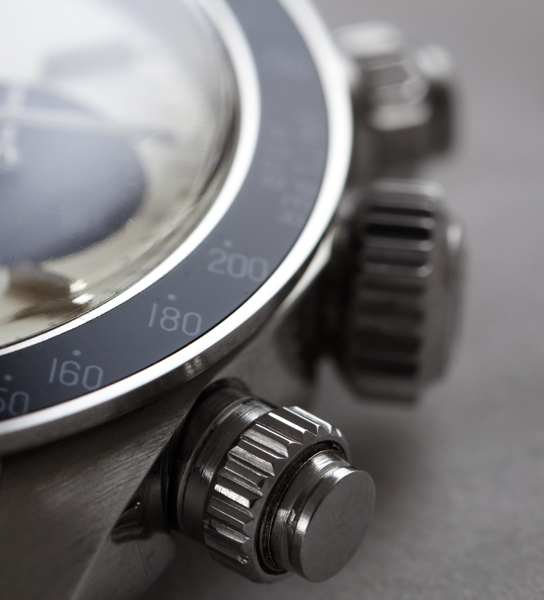
Fundamental to the distinction of vintage Daytonas, the pushers are the two buttons respectively at 2 and 4 o’clock, which serve to start or stop the chronograph. They are divided into pump pushers (left) and screw-down pushers (right), plus some variants that we are not considering at the moment (i.e. “Millerighe”). Therefore, to the eye the pump pushers look smooth, polished while the screw-down ones are characterized by an important knurling to improve the grip on the fingers. Functionally, the main difference is that the pump pushers can be used immediately without any initial adjustments. On the other hand, screw-down pushers need to be unscrewed before they can be used. This difference is due to the fact that the screw-down pushers, thanks to their construction, allow a good impermeability when screwed.
Bezel

Another important part for distinguishing different references is the bezel. By this word we mean the circular metal part that is placed around the dial, above the case. In the case of Daytona, it has a tachymeter scale with the classic “UNITS PER HOUR” inscription and can be made entirely of metal (gold or steel) or of a metal base with a black bakelite insert (like the photo above).
Dials
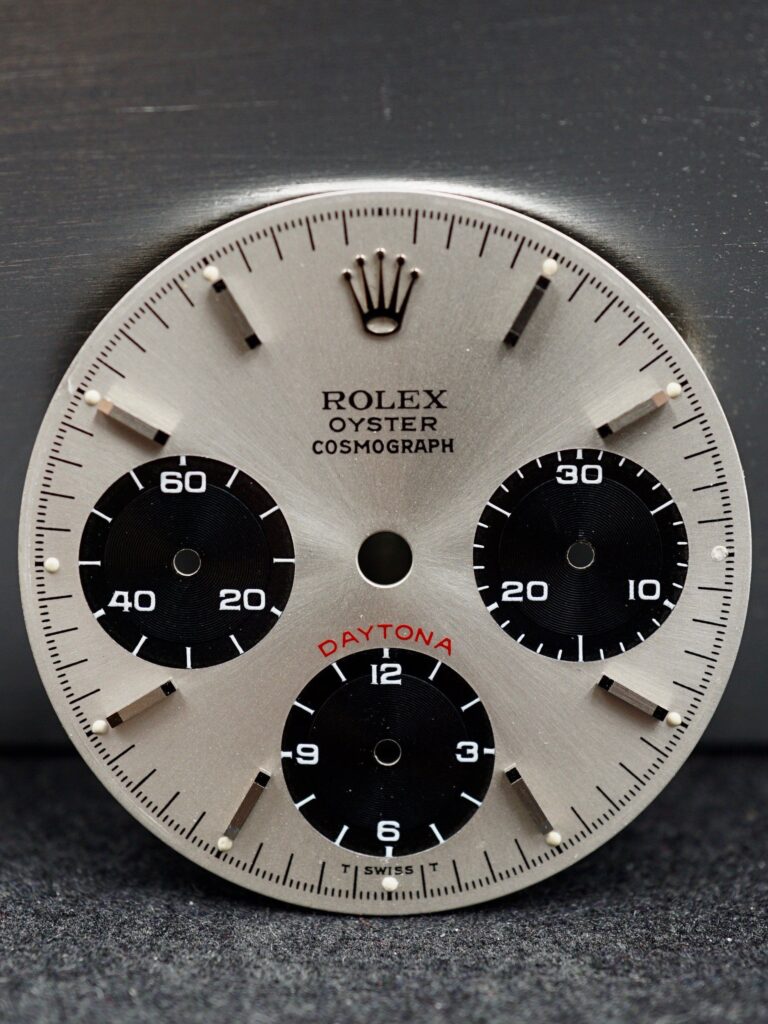
The richness of vintage Rolex Daytona watches is often related to the types of dials they mount. These vary between white, silver, champagne and black. The peculiarities in this case are really many, which is why we will address them after telling you about the most important references. The reason is because the variety of dials does not differentiate each individual reference but results more as a variable detail of each individual piece, even within the same reference.
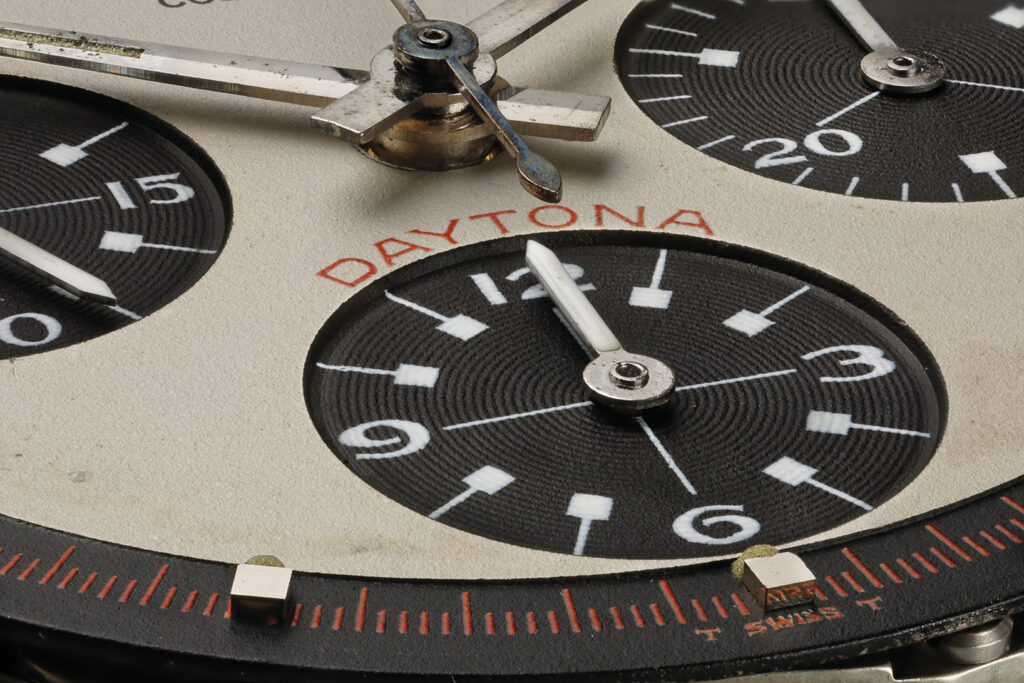
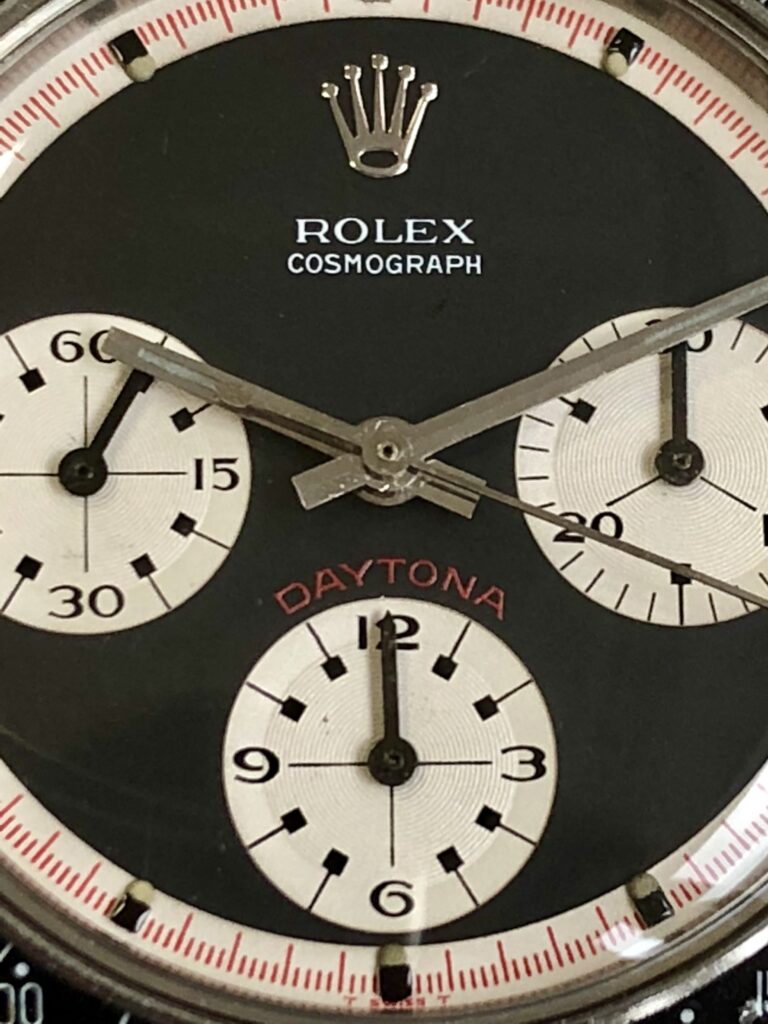
The most sought-after dials in recent years are the exotic ones, more commonly called “Paul Newman” dials because they were worn by the actor himself. You can learn more about the history of Paul Newman’s Rolex Daytona with our article at this link!
Subdials
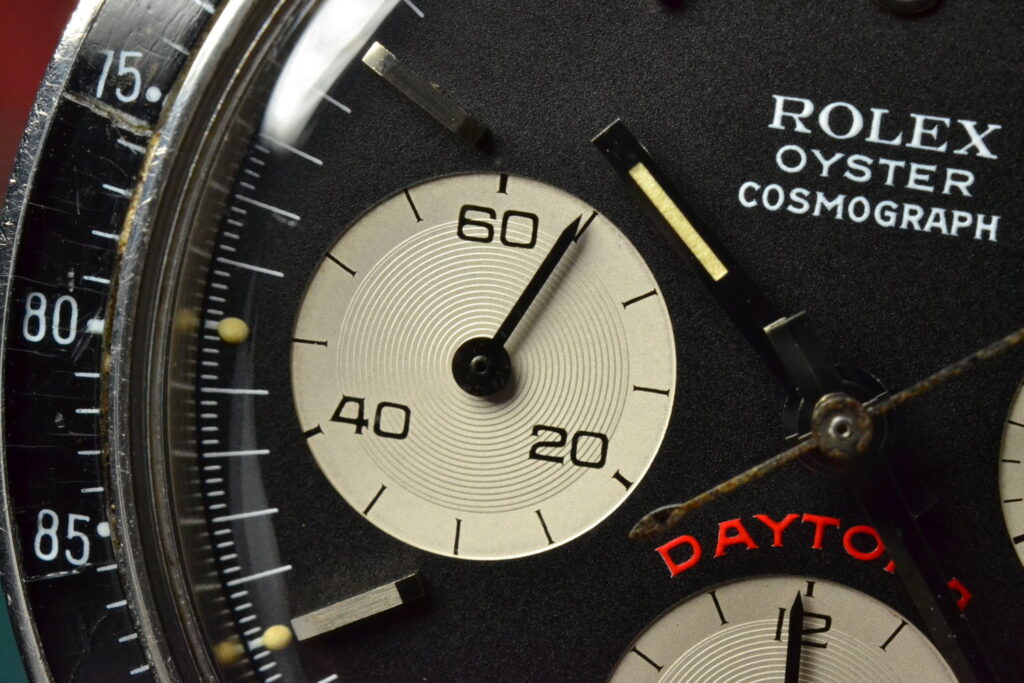
Very easy to spot and distinguish, register (also called subdials or counters) are the 3 “circles” at 3-6-9 o’ clock, usually in a contrasting color from the dial.
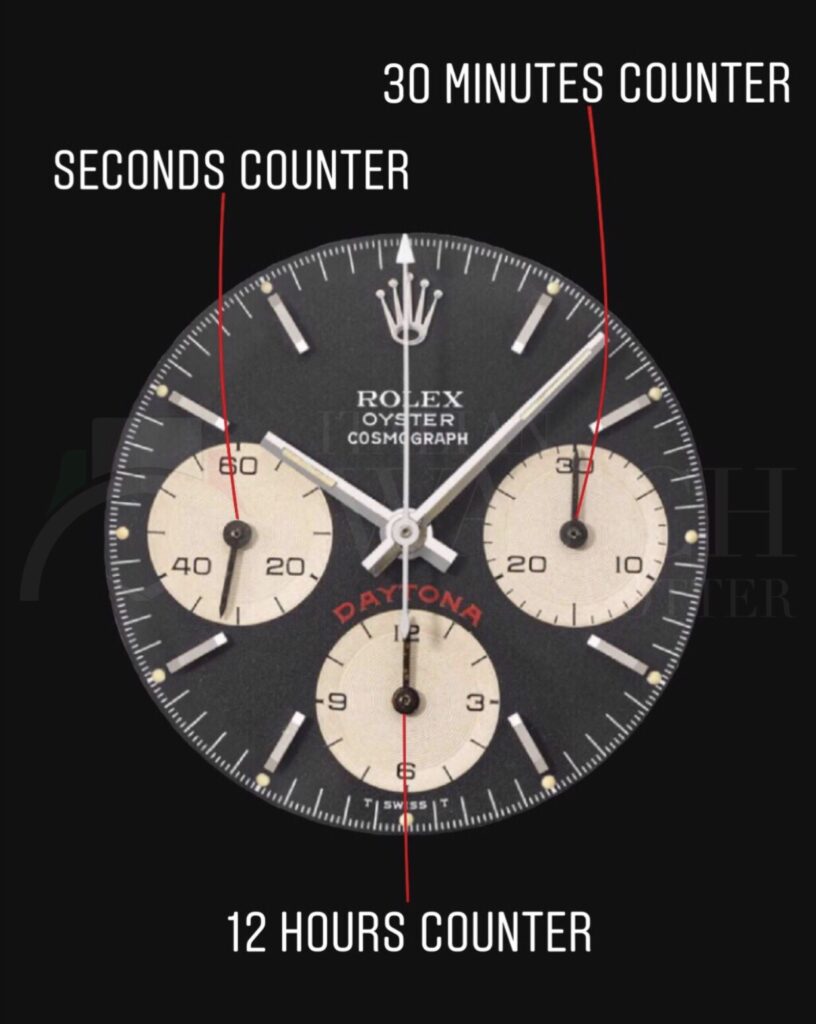
The configuration of early models’ subdials is shown in the picture below, meanwhile modern Rolex Daytona have the seconds counter at 6 and the 12 hours counter at 9 (they were inverted).
Calibers
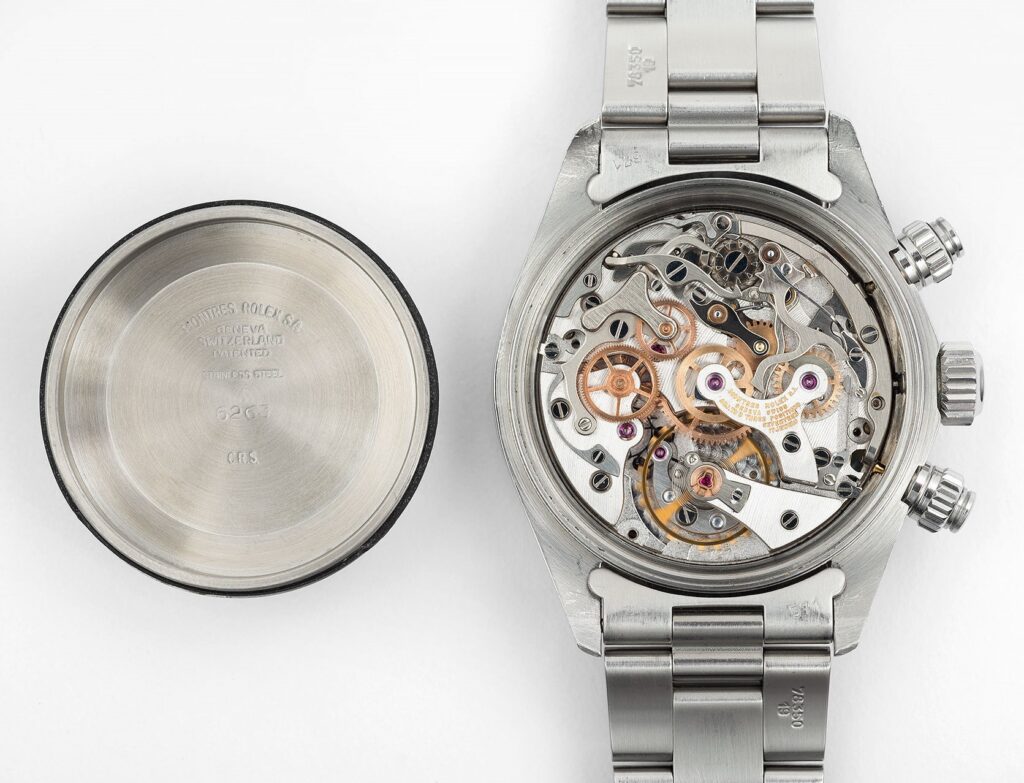
It is the beating heart of all watches and is called caliber, movement, or mechanism. Vintage Daytona with 4-digit reference all mount Valjoux movements, one of the most accurate chronographs produced at that time in history (yes, Rolex did not manufacture its own chronographs). Only in the 5-digit Daytonas (e.g.16520) will a new Zenith manufacture mechanism be adopted.
Bracelets
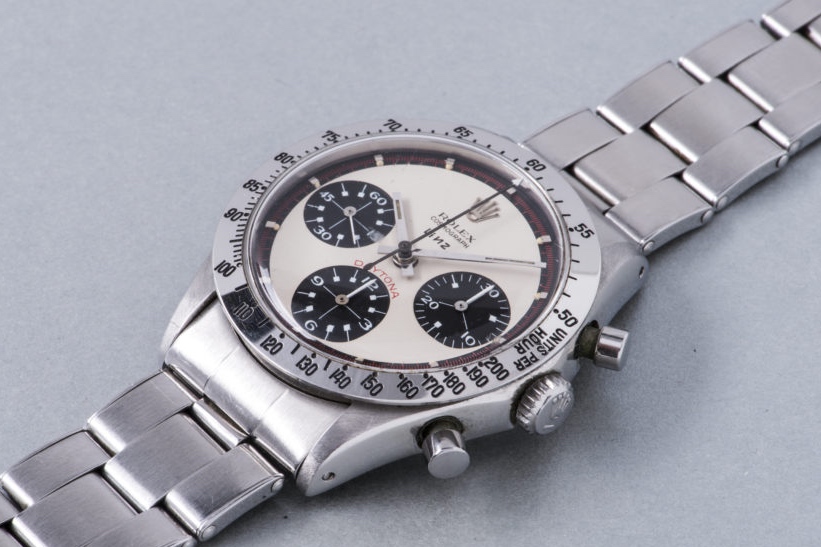
The bracelets used in these years seem relatively few. The most common are 3-links Oyster (wide center link, narrow side links), but there are also several examples with a 5-link Jubilee bracelet (3 narrow center links, 2 wide side links).

Oyster versions are totally satin-finished for steel, while for gold the central link is polished. We can distinguish 3 variants:
- Riveted: hollow links with a metal cover on the sides (second and third picture below)
- Folded: semi-hollow links consisting of a folded metal sheet
- Solid: solid links with no holes
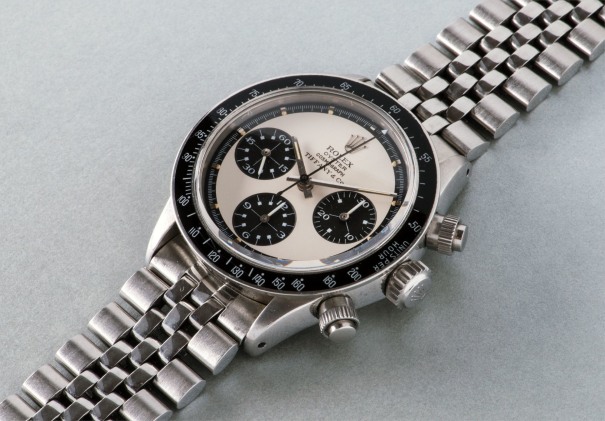
Jubilee versions, on the other hand, feature only solid links with the middle three rows polished and the outer two satin-finished.
Once finished this first basics analysis, it is time to find out how to distinguish vintage Rolex Daytona with 4-digit references ( 6263, 6269, etc.). You should now be ready to know all the versions of 4-digit vintage Daytona and understand how they differ.
Pre-Daytona 6238
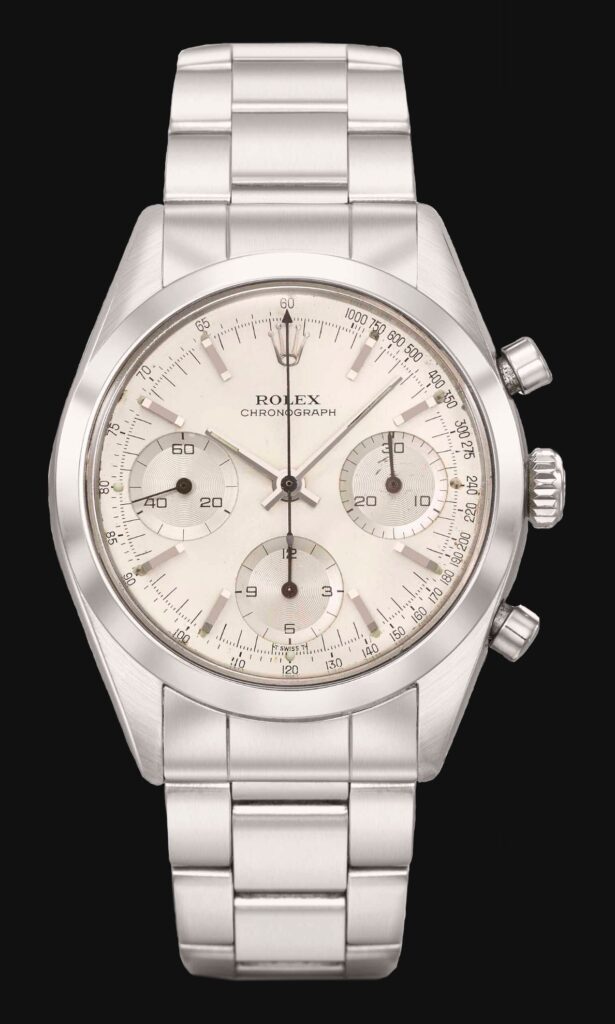
Let’s start with the chronograph that preceded this historic model: reference 6238, also known as the “Pre-Daytona“.
The 6238 was produced only in steel or yellow gold.
There are two types of dials on both versions: white or black.
The tachymeter scale is not on the bezel but on the outer edge of the dial.
The pushers are pump pushers.
Case measures 36 mm in diameter.
The bracelet is a riveted Oyster or Jubilee with folded links.
The movement is the Valjoux 72 B, which from 1965, although it remains unchanged, takes on the name 722.
This reference was produced from 1960 until about 1967.
Rolex Daytona 6239
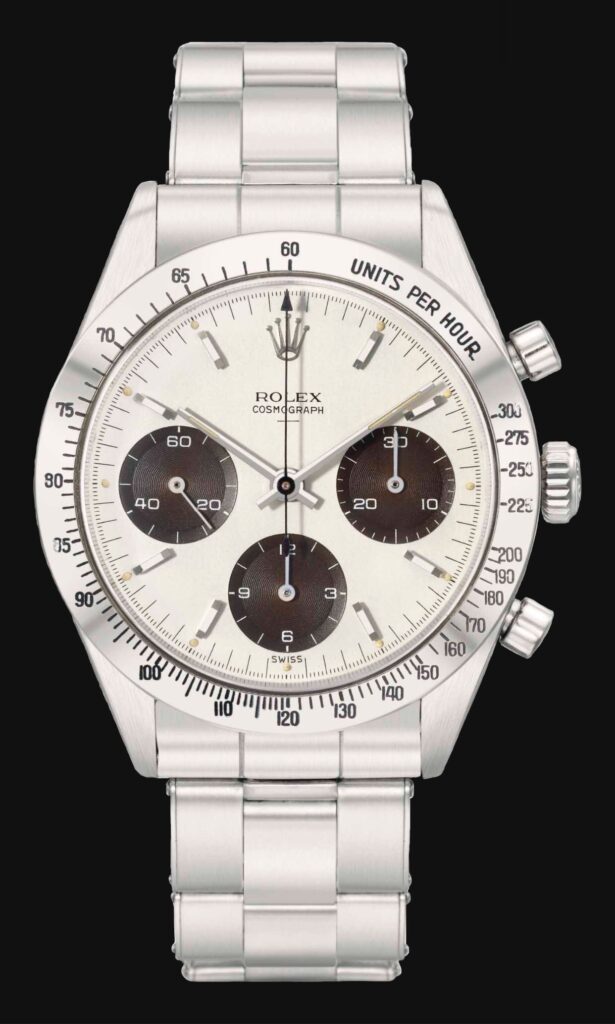
Here is the first Daytona in history: the 6239.
This model was produced, like its predecessor, in steel or yellow gold, this time with a decent selection of dials.
The pushers remain pump-operated. Also in this version we have the two different bracelets, Oyster and Jubilee. The dial types vary widely: black for both metals, white-argenté for the steel version, champagne for the gold version (all with contrasting subdials), exotic (more commonly called “Paul Newman”) both black and white, for both metals. In the gold version the shade of white is tending toward yellow.
The tachymetric scale moves permanently from the dial to the bezel, but pushers remain “pump”. In this version too we have the two different bracelets, Oyster and Jubilee. In some specimens, the word Daytona does not appear, but only the word Cosmograph.
Produced from 1963 until about 1969.
Rolex Daytona 6241
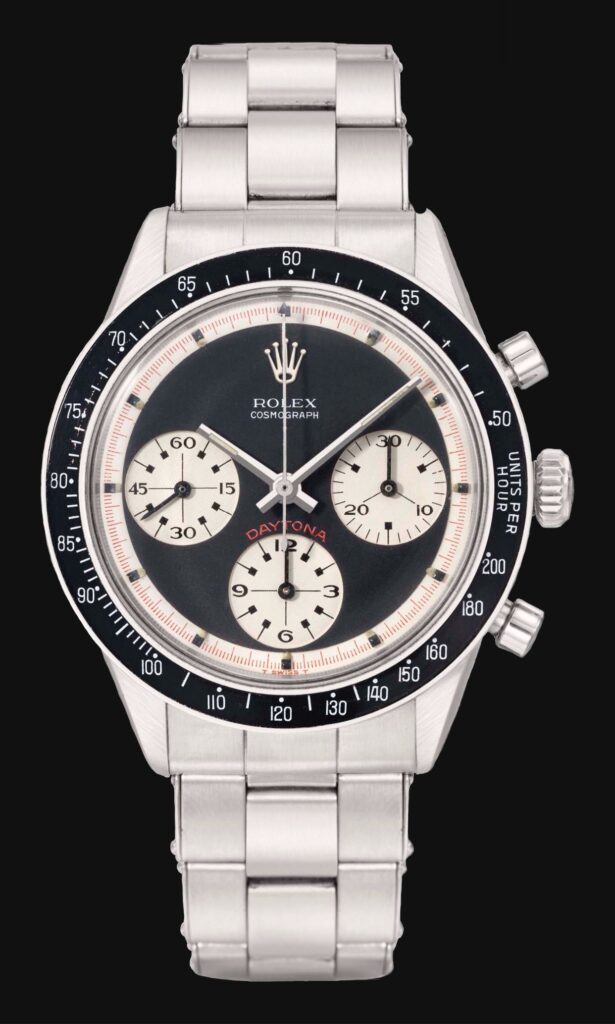
Just two years after the release of the first Rolex Daytona, the reference 6241 follows.
No variations in metals, we still have steel or yellow gold. The only noticeable variant is the bezel, from metal to bakelite. In this way there will be a sharp contrast between the case and the tachymetric scale. Dials remain almost unchanged. The caliber too is unchanged, it remains a Valjoux 722.
The 6241 remained in production from 1965 until about 1969.
Rolex Daytona 6240
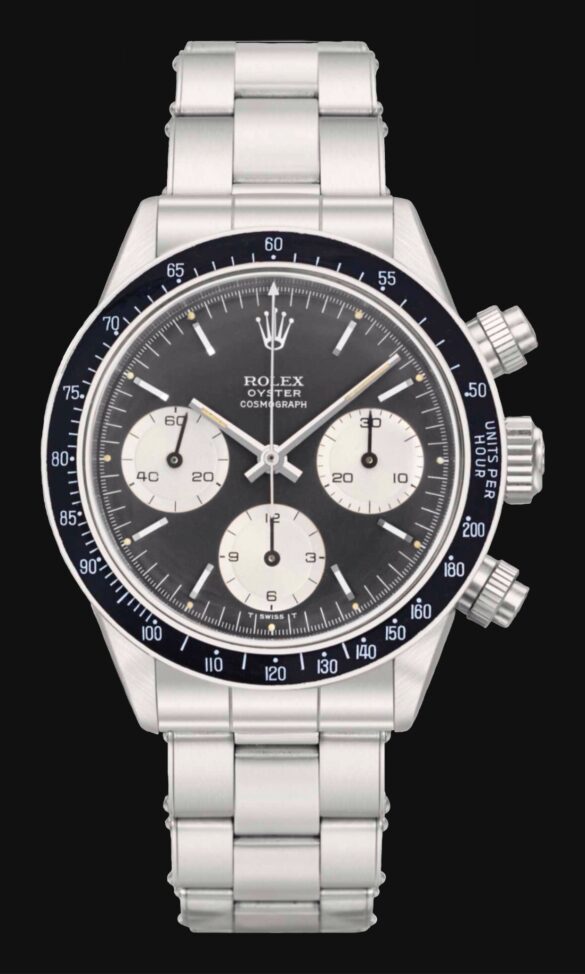
A further breakthrough for the Rolex Daytona comes with the 6240, a transitional model on which the “screw-down” pushers and the “Oyster” print on the dial appear for the first time.
This reference was produced only in steel, which suggests that it was only an experimental model. Despite this, it remained in production for 4 years, from 1965 to 1969.
The watch is offered with the same dials as the 6241. One fairly sure way to distinguish ref. 6240, though not always correct, is the missing Daytona inscription on the dial. In fact, the 6240 is the only vintage Daytona with a bakelite bezel that does not have it. The first series of screw-down pushers are called “millerighe”, given the very dense knurling present around the key.
Rolex Daytona 6262
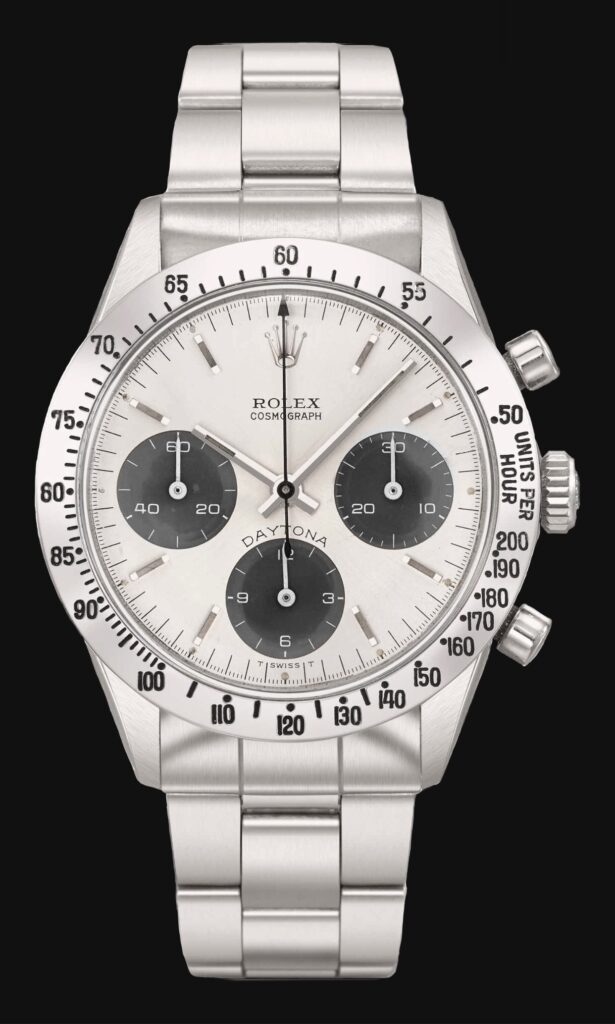
Another transitional model is the Rolex Daytona 6262… but how many transitions have there been?
It represents the evolution of the 6239 with a new caliber, the 727, replacing the previous 722-1. The new caliber is tested on both metals and almost all dials. Short life for this reference too, from 1969 to 1972.
The only difference from the Daytona 6239, other than the caliber, is the tachymeter scale, which can only be 200 km/h and not 300 km/h.
It’s the last Daytona (along with the 6264 in the next lines) produced with pump pushers, after 1972 they will disappear forever.
Rolex Daytona 6264
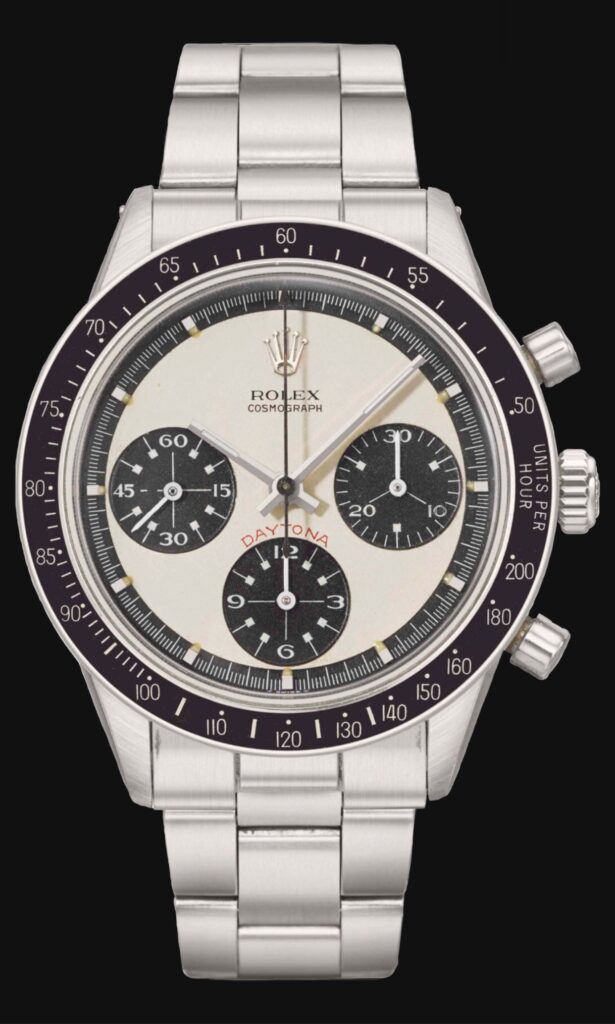
The 6264 another experimental model that replaces the Daytona 6241… Rolex loves to experiment!
The caliber, as with the 6262, becomes a Valjoux 727 derived from the 72, but the reference retains all the other features of the 6241 in terms of dials and metals. This reference is produced in the same years as the 6262 and is itself the last to have pump keys.
But then how can you tell the difference between a 6241 and a 6264?
I will give you a little tip. The first and quickest way concerns the font of the tachymeter scale, particularly at 200. As you can see, the “2” on the 6264 looks much more angular and thin. On the other hand, the 6241 has a thicker and squarer font, especially on the lower left corner of the “2.”
Rolex Daytona 6263
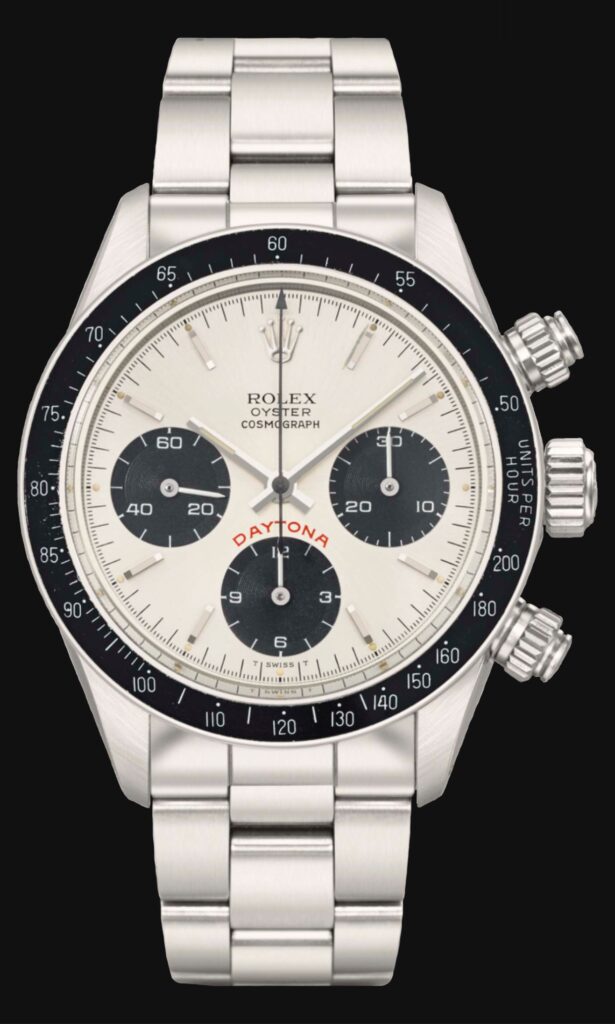
All the changes, from calibres to dials, from bezels and pushers, to get to 6263.
This model combines the bakelite bezel introduced with the 6241 and the screw-down pushers introduced with the 6240. Screw-down pushers are produced in a new series other than “millerighe”.
In this case, a new 7.00 mm twinlock crown (formerly 6.00mm) is adopted, which guarantees the water resistance of the 37mm Oyster case. “Millerighe” screw-down pushers are replaced by a new series. The bezel will remain in bakelite.
17 years in the Rolex catalogue: in production from 1971 until about 1988.
Rolex Daytona 6265

Also in 1971, the 6265 was introduced to replace the 6262
Reference 6265 is the richest Rolex Daytona in terms of dials, not so much for different colors but for writing and details.
Among them are the “Big Red” Daytona (one of the most famous) characterized by the larger-than-usual red name above the counter at 6 o’clock. On the gold versions is introduced the print “Superlative Chronometer Officialy Certified” that certifies the Valjoux movement .
Paul Newman dials on 6265 are rare, available only on the first steel production.
Produced from 1971 until about 1988.
Rolex Daytona 6269
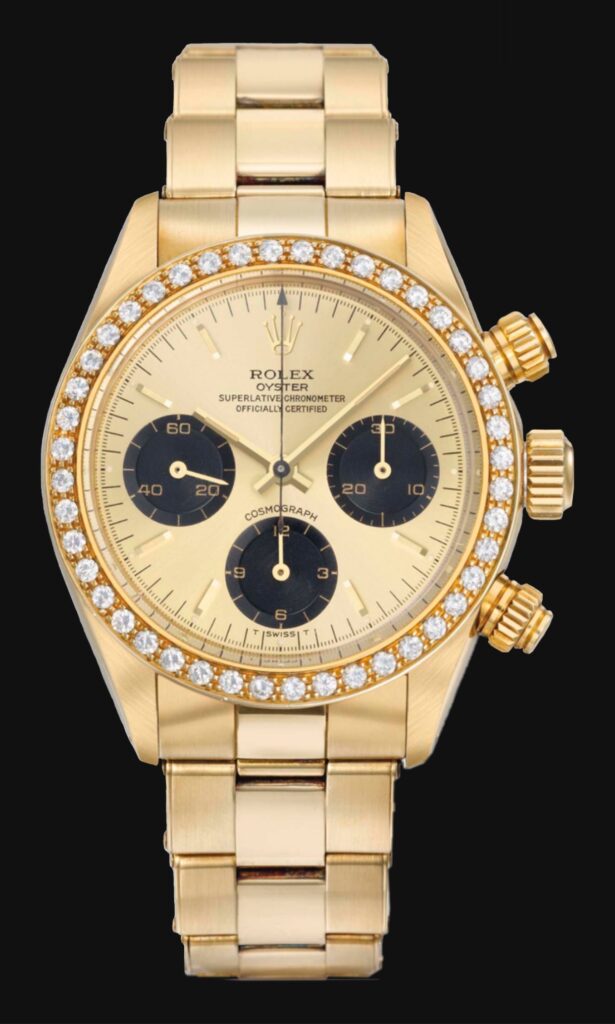
We waited for the end to show you the most absurd Rolex Daytonas: the 6269 and the 6270!
When diamonds were not for rappers but for Middle Eastern sheikhs, Rolex used to take special orders, allowing major customers to request unique models.
Reference 6269 features only brilliant-cut diamonds. The only two known versions are this one (in the picture) with the bezel and another one with pavè dial, sapphire indices and champagne-colored counters.
Rolex Daytona 6270
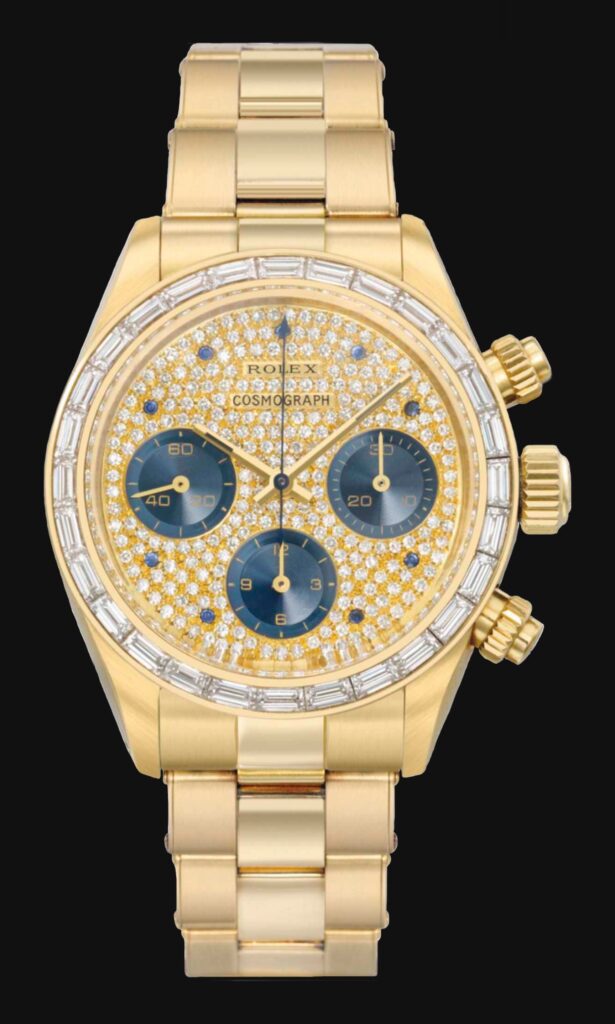
We conclude with the rarest: the Rolex Daytona 6270
Only eight pieces of ref. 6270 are said to exist. 28 baguette-cut diamonds instead of the tachymetric scale, 240 brilliant-cut pave dial with 9 sapphires instead of stick indexes. No sign of tritium except on the hour and minute hands.
If you are among the 8 owners of this piece of art the bad news is you will have to settle for measuring times and couldn’t calculate your car’s speed…
… the good one? Just look at that watch.
Here’s a recap…
6238:
- pump pushers
- smooth bezel without tachymetric scale
- plain-color dial with tachymetric scale
6239:
- pump pushers
- metal bezel with tachy scale (300 or 200 uph)
- contrasting colors dial
6241:
- pump pushers
- bakelite bezel
6240:
- “millerighe” screw-down pushers
- bakelite bezel
- only produced in steel
6262:
- pump pushers
- metal tachy bezel (only 200 uph)
- caliber 727
6264:
- pump pushers
- bakelite bezel
6263:
- screw-down pushers (new series)
- Twinlock 7.00mm crown
- 37mm case
6265:
- screw-down pushers
- metal tachy bezel (only 200 uph)
- rare exotic dials
6269:
- yellow gold
- brilliant-cut diamond bezel
- champagne or pavè dial
6270:
- yellow gold
- baguette-cut diamond bezel
- pavè dial
To learn more about the world of watchmaking follow us on Instagram.

